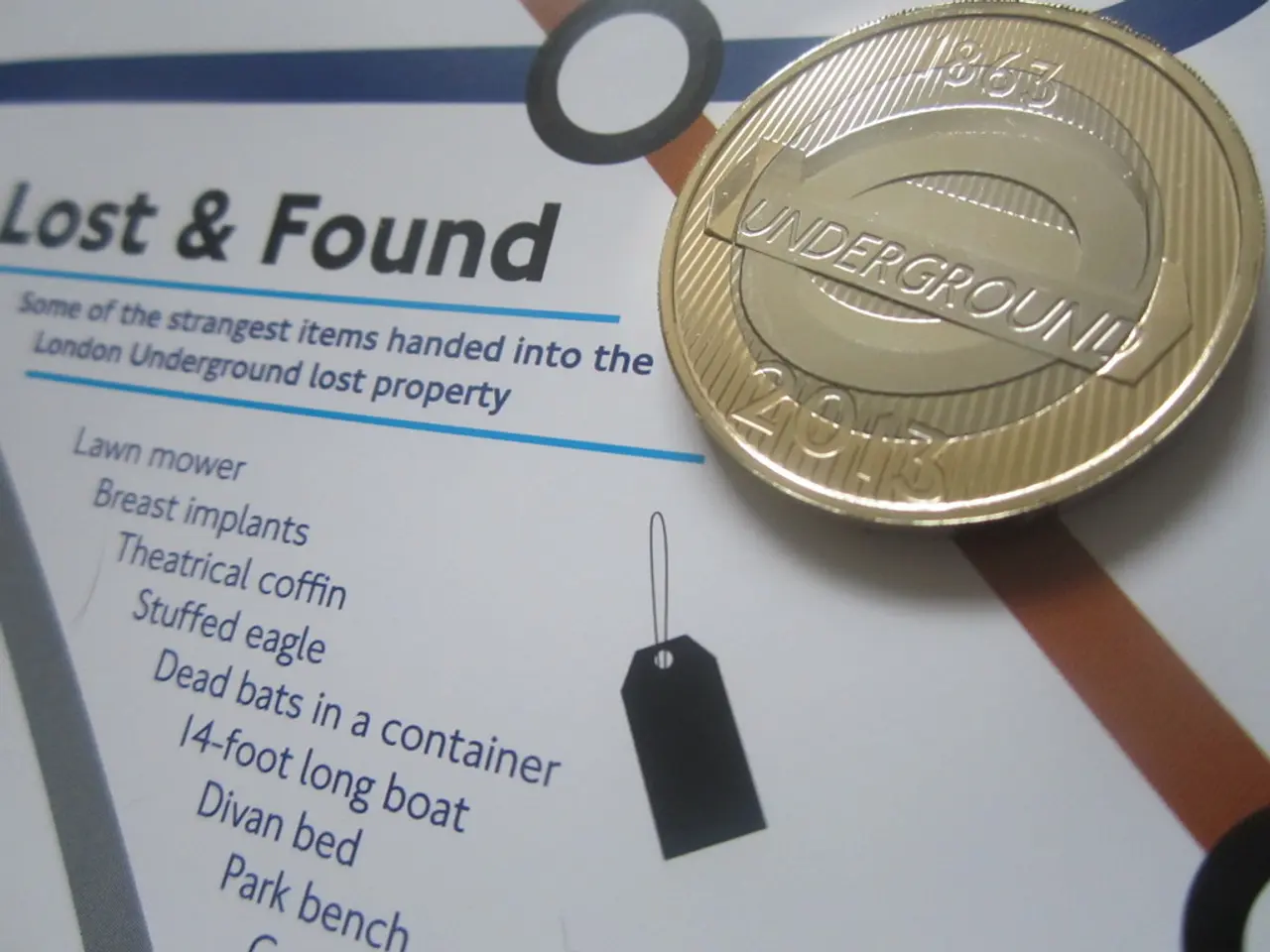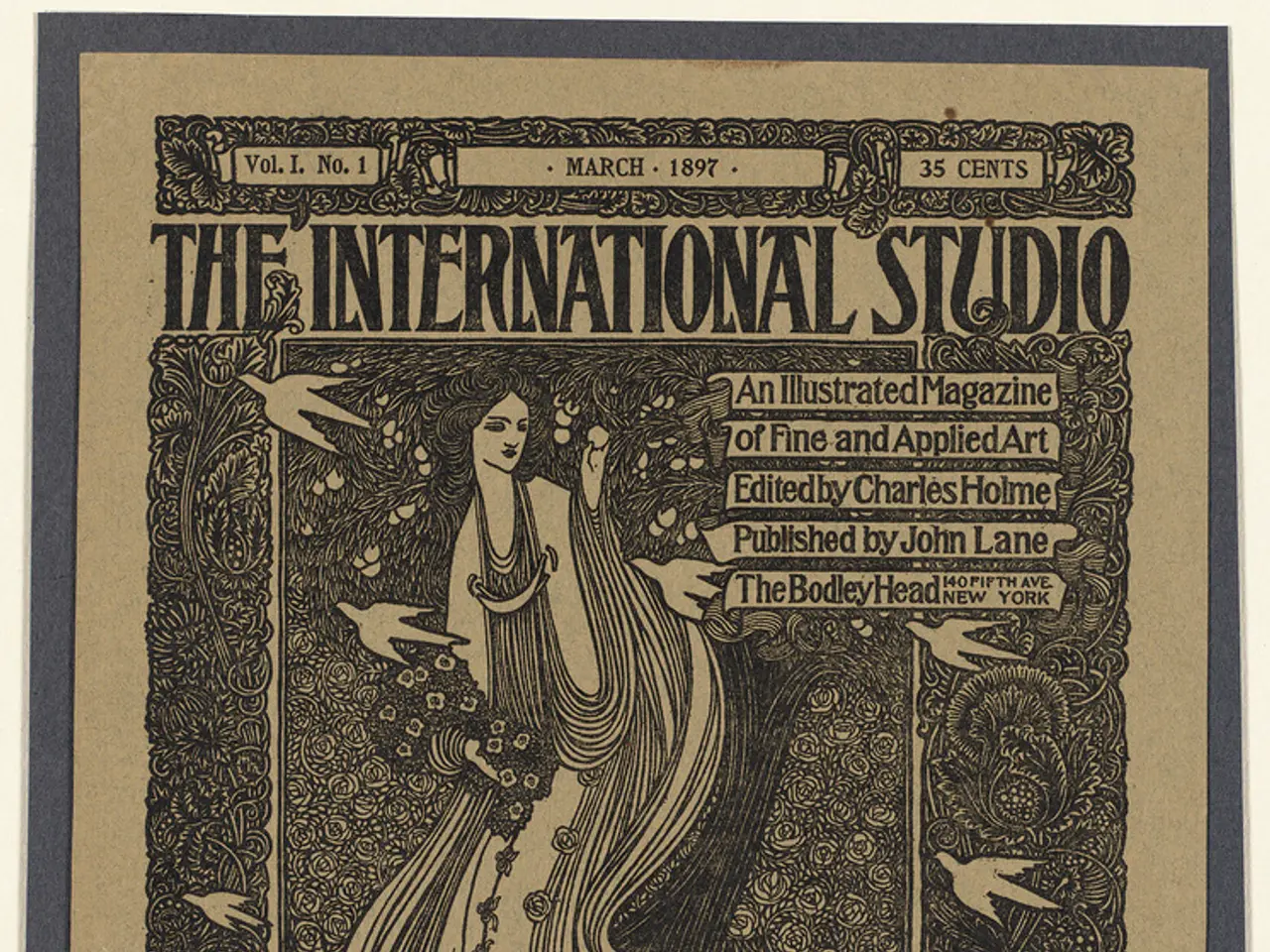Counterfeiters Predilection for Widely Used Banknotes - As Per Federal Bank Reports
In recent news, there has been a significant rise in counterfeit euro banknotes in Germany, with the Bundesbank removing approximately 36,600 fake banknotes from circulation in the first half of 2025. This marks an 8% increase compared to the latter half of 2024 [1][3].
The most frequently counterfeited note in Germany is the 50-Euro note, accounting for nearly 18,800 pieces or 51% of discovered counterfeits. This trend reflects a strategic shift by counterfeiters towards more common denominations to facilitate fraudulent transactions [1].
The rise in counterfeit 50-Euro banknotes is particularly noteworthy. In fact, there has been a noticeable increase in counterfeit 50 and 100-Euro banknotes, while the number of counterfeit €200 and €500 notes has declined [1].
It's important to note that passing on counterfeit bills to someone else is a criminal offense punishable by up to five years in prison. The Bundesbank strongly advises against trying to pass on counterfeit bills and instead suggests handing them over to the Bundesbank or the police.
In addition to banknotes, counterfeit coins are also a concern. Of the counterfeit coins detected, around 91 percent were the largest single coin denomination, the 2 Euro coin. The number of counterfeit coins detected increased by 12 percent to over 68,400 pieces [1].
Despite the increase, the overall level of counterfeit banknotes remains statistically low, with about nine counterfeit banknotes per 10,000 inhabitants [1][3]. The European average for false banknotes per 10,000 inhabitants was 13 in the previous year, while in Germany, it corresponds to nine false banknotes per 10,000 inhabitants.
The Bundesbank assures that it is very unlikely for citizens in Germany to come into contact with counterfeit money. However, experts advise using the "Feel-See-Tilt" principle to check banknotes before accepting them, as many counterfeits are easily recognizable [2].
In a case outside Germany, reported in Romania, counterfeit 50-Euro notes were circulating, highlighting the prevalence of fake 50-Euro notes in the broader European region [5].
It's important to remember that accepting counterfeit money results in a loss, as it is not replaced. In a recent case in Germany, suspects claimed that they needed the counterfeit bills for a Serbian wedding tradition, but were suspected of intending to use them for a fraud scheme [4].
The total damage from counterfeit banknotes increased by 1.6% to 2.13 million Euros [3]. Despite the rise in counterfeit banknotes, the financial damage caused by counterfeit money remained stable due to a shift in denominations being forged.
Sources: [1] https://www.bundesbank.de/Redaktion/DE/Pressemitteilungen/2025/2025-08-20-counterfeit-euro-banknotes-on-the-rise-in-germany.html [2] https://www.bundesbank.de/Redaktion/DE/Standardartikel/Feel-See-Tilt-ein-Prinzip-fuer-den-Umgang-mit-euro-Geldnoten.html [3] https://www.bundesbank.de/Redaktion/DE/Standardartikel/Counterfeit-euro-banknotes-in-germany-2025.html [4] https://www.bundesbank.de/Redaktion/DE/Pressemitteilungen/2025/2025-07-09-counterfeit-euro-banknotes-in-germany.html [5] https://www.bundesbank.de/Redaktion/DE/Standardartikel/Counterfeit-euro-banknotes-in-europa.html
- In the realm of general news, the rise in counterfeit 50-Euro banknotes is a concern not only in Germany but also in neighboring countries, as reported in Romania.
- The increase in counterfeit banknotes and coins in Germany has shed light on the criminal aspect of this issue, as passing on counterfeit bills can lead to imprisonment for up to five years.
- The finance industry, banking and insurance sector, and even the broader economy, may experience financial implications due to the rise in counterfeit euro banknotes, despite the stable overall damage from counterfeit money.




